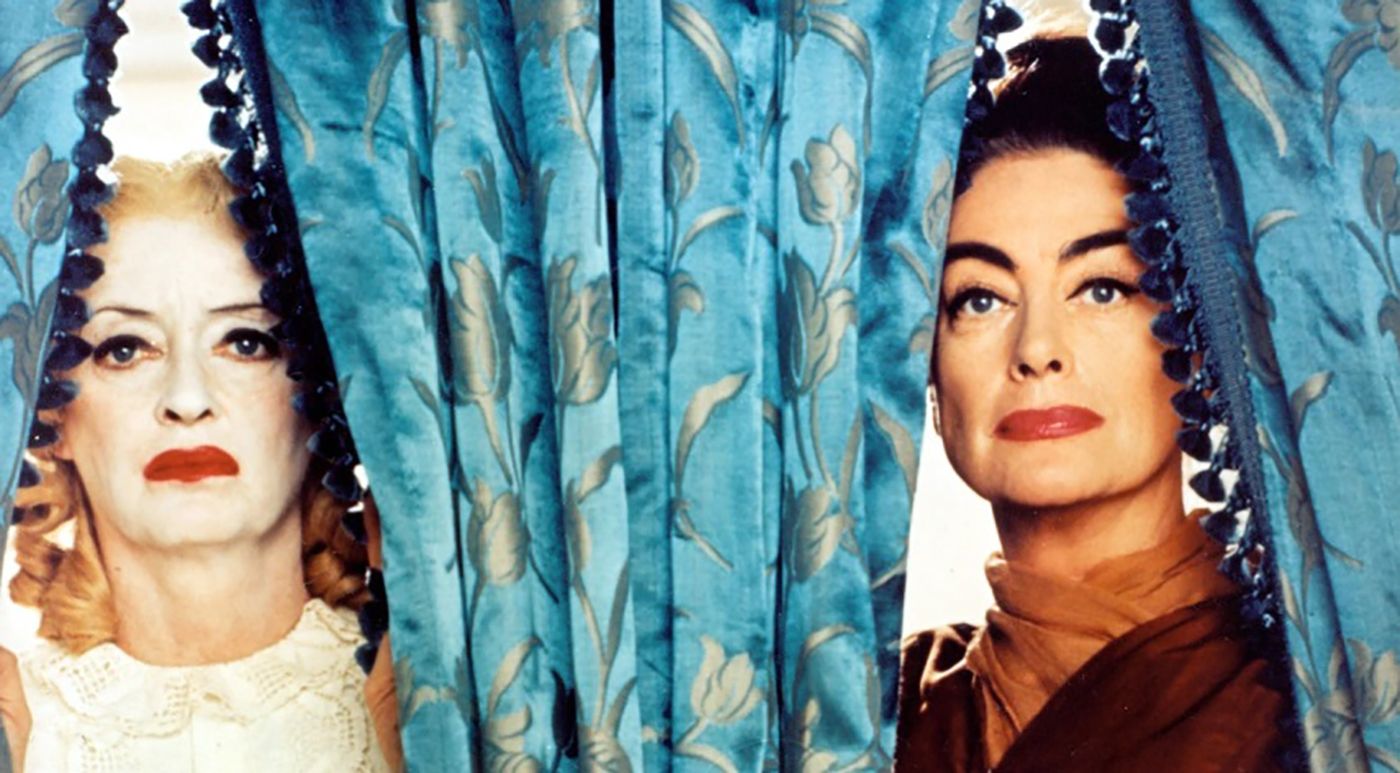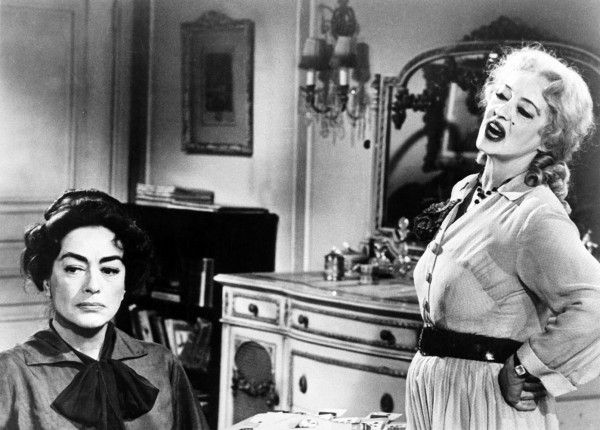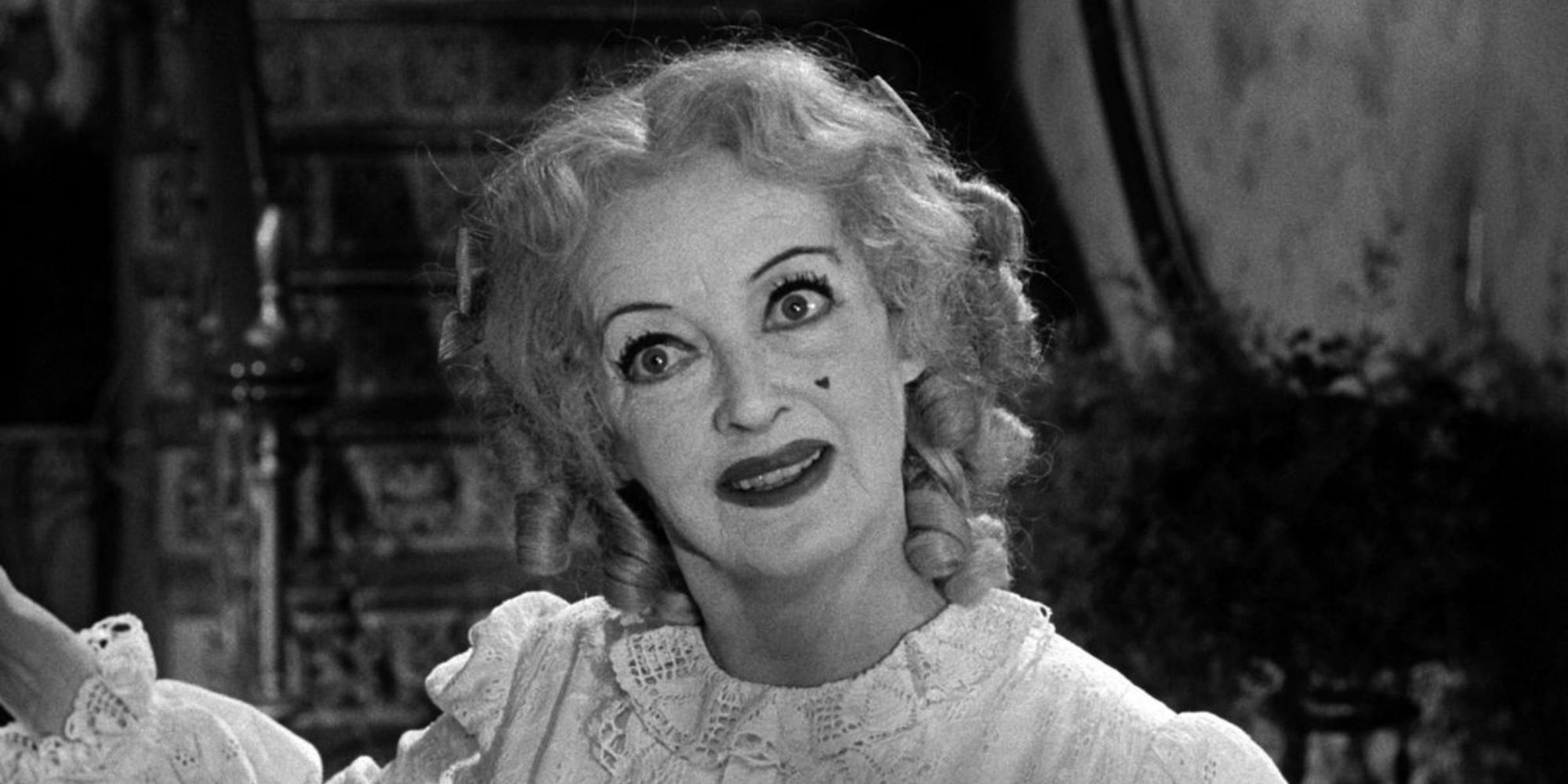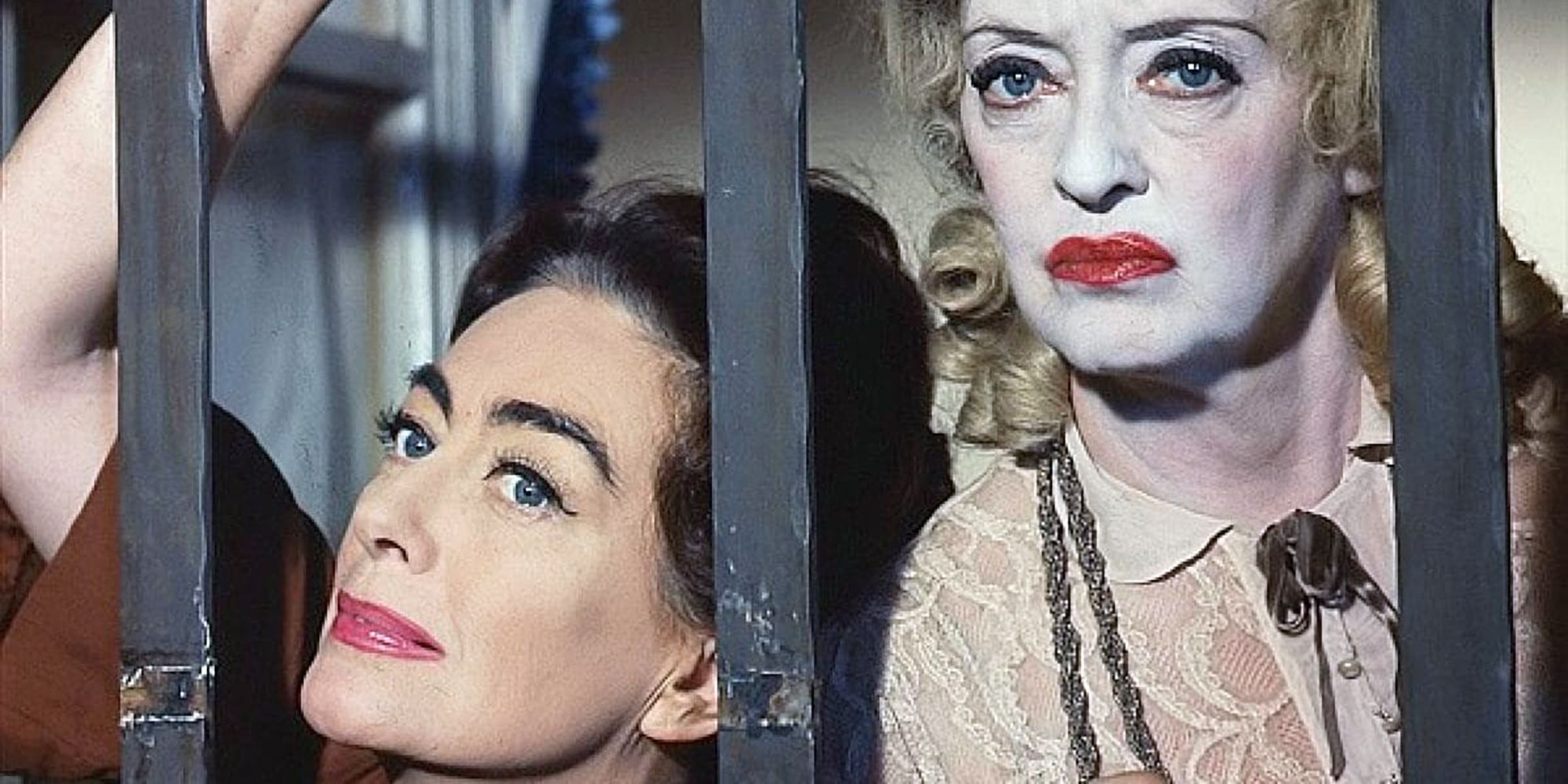This October will mark the 60th anniversary of Robert Aldrich’s slice of Grand Dame Guignol What Ever Happened to Baby Jane?, a toxic tale of sibling rivalry and the most famous film in the hagsploitation genre, which also includes Hush, Hush…Sweet Charlotte and Straight-Jacket. For readers unfamiliar with the cinematic term Grand Dame Guignol, the previously mentioned hagsploitation or Hag Horror, is a short-lived genre in the 1960s and early 1970s, popularized after the critical and commercial success of Baby Jane. Aldrich’s movie spawned a number of spiritual successors, and these movies were often characterized by family trauma, the shadowy terrain of secrecy, murder, and Grand Dames.
Who Exactly Is Baby Jane?
The film opens in 1917 and Baby Jane Hudson is an idolized Vaudeville theatre star who performs to a packed house while her proud-as-punch father cheers her on, much to the chagrin of the misty-eyed Blanche After performing a rendition of "I Wrote a Letter to Daddy" and getting presented with a creepy lifelike replica of herself (a recurring motif throughout the movie), Baby Jane throws a tantrum backstage, demanding ice cream and refusing to take a nap. Her father panders to her every whim, cruelly scolding Blanche for refusing ice cream.
Fast-forward to 1935 and now Blanche is the hottest ticket in Tinseltown while Baby Jane is a "no talent broad," who the studio is obligated to hire because of a clause in her sister’s contract. The studio is exasperated by Baby Jane slapping security, constantly drinking, and getting up to all sorts of unsavory activities. Mr. Gold and the studio are desperate to legally get around the contractual stipulation. In the next scene, we see the car "accident" that sets the rest of the events of the film in motion.
Now, it's 1962 and Blanche (Joan Crawford) is in a wheelchair and the thoroughly unhinged, perpetually pickled Baby Jane (Bette Davis) is her unwilling servant, skulking around their downtrodden mansion in Vaudevillian make-up, school-girl ringlets, and doll-like attire. William Glasgow’s art direction is unnervingly sublime and must be applauded. Meddling maid Elvira (Maidie Norman) implores Blanche to get her erratic sister help, and Blanche tells Elvira (who shows her a stack of fan-mail Jane has withheld) how Blanche was once a wonderful performer and sister. What Jane is unaware of is that Blanche is secretly selling the mansion and decides to keep her sister in the dark, fearing the repercussions.
Upping the Gothic Melodrama Ante
The Gothic melodrama ups the ante with Baby Jane’s cruelty really escalating. Encompassing everything from fraud, embezzlement, starvation, pets, vermin for lunch, and murder. She also hires Edwin Flagg (Victor Buono), a grubby, money-hungry momma’s boy with a phony British accent who charms Jane. With an eye on the bottom line, he is more than willing to enable Jane’s delusional fantasy of a showbiz revival.
From Peter Shelley’s definitive book on the subject, Grand Dame Guignol Cinema: "Our reaction to Davis’s singing here is filtered through Edwin’s barely concealed disdain. Though Jane has her own look of disappointment when she first sees Buono, Davis’s performance calms down, and we see the possibility of happiness for Jane, though we know what that means for Blanche."
The Road to Grand Dame Guignol was a rocky one. Joan and Bette’s careers had nearly gone to seed and much of the scripts sent their way contained contemptible material that was beneath them. Offers to appear in prestige pictures had dried up by the 1960s and their careers were both waning. Enter Robert Aldrich, a man of good standing in Hollywood, who had completed pictures all over Africa and England, and was looking for a new project. He was approached by Joan Crawford, who’d found a relatively unknown Gothic horror by Henry Farrell (What Ever Happened to Baby Jane?). Crawford was so enamored by the story of thwarted ambitions, fragile impulses and shattered ideals that she visited Bette Davis during the production of Tennessee Williams's Night of the Iguana and talked her into taking on the titular role.
Tallulah Bankhead and Olivia DeHaviland, who would co-star with Davis in Hush, Hush…Sweet Charlotte, had been considered for the role. They still had to pitch the contentious material to the studio and certain conditions needed to be met. Seven Arts accepted the script after Aldrich spent a research-intensive number of months researching and developing the story. Aldrich really cut the picture in the camera, said Bette Davis. "He had to, because we didn’t have time for many setups, and he wanted to show the picture for a week in the Los Angeles area to qualify for Academy consideration."
What About That Bette Davis-Joan Crawford Feud?
It is a common misconception that Bette and Joan spent decades at loggerheads and were involved in a vicious rivalry. Their paths had crossed several times prior to the meeting on Baby Jane. During the filming of Dangerous in 1935, Bette had designs on her co-star Franchot Tone, but this was not reciprocated, and he married his then-fiancée Joan Crawford. The rumors of in-fighting that marred the production of Baby Jane are grossly exaggerated, and the women developed, if not a friendship, at least a mutual respect for each other. Ryan Murphy’s Feud exaggerated the relationship between the two icons for dramatic effect in his FX serial. What Davis and Crawford were unaware of was that both the press and the studio wanted the movie to succeed and would go to great lengths to do just that — manipulating the women to reignite the feud and draw as much press attention as possible. It seemed to work with Davis later quoted as saying: "The best time I ever had with Joan Crawford was when I pushed her down the stairs in What Ever Happened to Baby Jane?"
Nobody believed the gruesome story of Baby Jane on a budget of less than $750,000 and Aldrich finishing shooting in a month. But it was both a critical and commercial success (and generated Oscar buzz) and the box-office hit of 1962. Bette Davis must’ve been pleased Alfred Hitchcock had been unavailable when she pitched the book to him. The glamour-cats Bette Davis and Joan Crawford enjoyed being back in the spotlight – even if this meant portraying isolated grotesques in Hush, Hush… and William Castle’s Straight-Jacket. Crawford jumped ship during the Hush! Hush! shoot, citing bullying and illness, and Davis was furious after The Oscar debacle.
What Ever happened to Baby Jane? has endured for 60 years and will continue to endure for years to come. It is now streaming on HBO Max.




